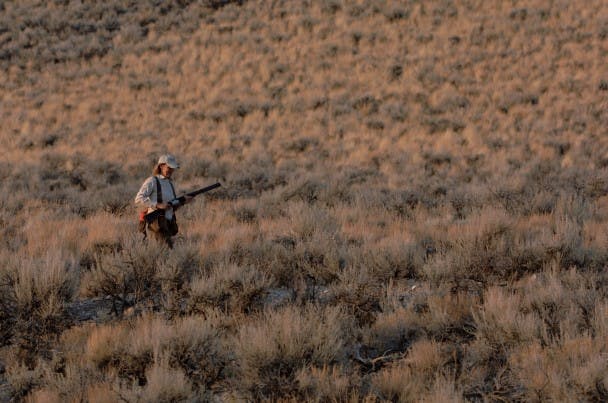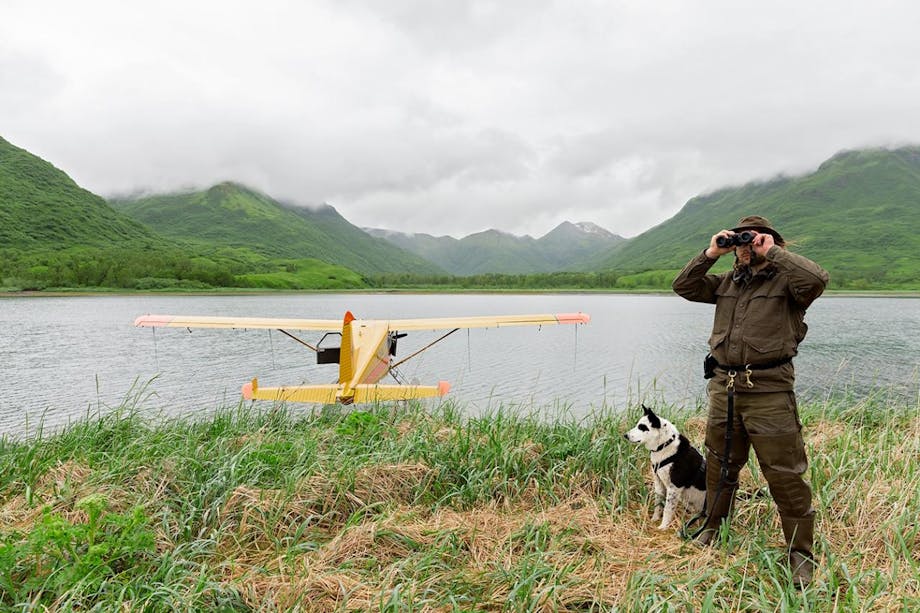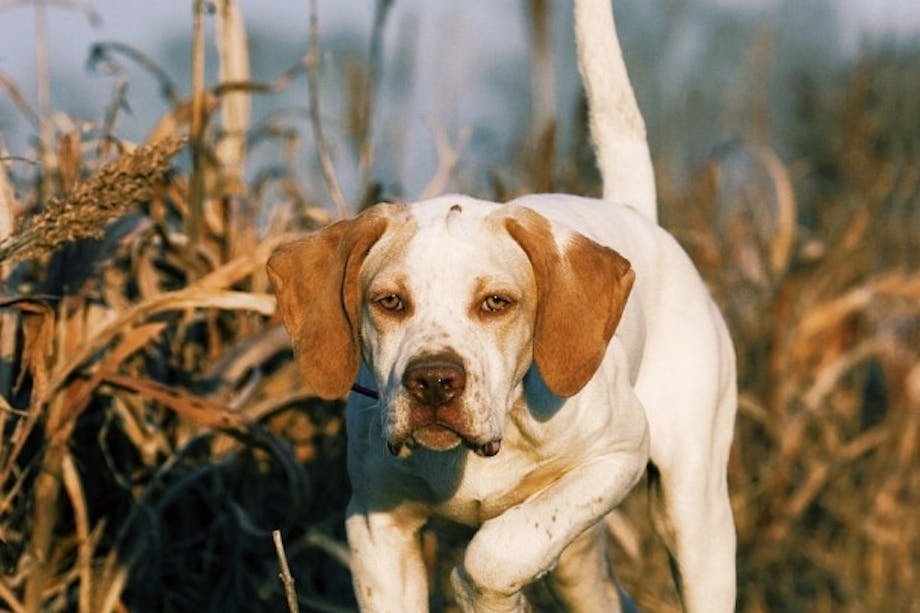 While most serious upland hunters wouldn’t think of leaving their dogs at home, sometimes opportunities to hunt good land (or between big trips) are lost. Plenty of other hunters may want to tackle upland birds but don’t have dogs, but that’s no reason to stay home.
While most serious upland hunters wouldn’t think of leaving their dogs at home, sometimes opportunities to hunt good land (or between big trips) are lost. Plenty of other hunters may want to tackle upland birds but don’t have dogs, but that’s no reason to stay home.
Words by David S. Lewis.
Photos by Lee Kjos.
While it may seem counter-intuitive, our hunting techniques can actually suffer when dogs are involved. Rather than being focused on the hunt, we often spend time with rusty or unfinished dogs that didn’t get the pre-season time they needed so, instead of hunting, we’re checking the GPS or signaling to unresponsive beasts with no idea what they’re supposed to be doing. We also tend to rely on our dog’s nose more than the organ that actually put humans at the top of the food chain: our brains. As finely tuned as a dog’s nose is, our brains are superior at reading a field and locating likely cover. Even more important, we can determine the best approach on that cover better than most dogs.
My crusty old Catahoula is not much of a bird dog. On a good day, he does what he’s supposed to, which for him is just finding and pointing. On a bad day, I watch terrified birds take to wing so far out of range I can barely see them.
And, on a great day, I leave him at home. Rely on your greatest asset – your brain.
Rely on your greatest asset – your brain.
Hunters have a tendency to over-rely on their canine companions, treating their storied sniffers as infallible birdfinders. Just because the dog isn’t on a pheasant by no means indicates there aren’t any around. Many factors affect a dog’s ability to locate a bird, some of them controllable (like training) while others are quite out of your control, like weather and wind.
Be Quiet.
Dogs also tend to make us hunt louder. Dogs are not particularly stealthy and, as we hear them crashing around ahead of us, we seem to think that we can behave similarly. Hunting is never improved by crashing around like a bull in a china shop. Not deer drives, not rabbits, and not pheasants. Think like a predator (something your dog may or may not be doing!) and move quietly. If a bird hears you busting straw from ten miles away, it has all the time it needs to either slip away or, worse, determine you aren’t a threat and just sit tight. You want to sneak up on your quarry such that, by the time it perceives your presence and has identified your behavior as predatory, it must make a decision very quickly. A flustered bird is the most likely to run or fly, as opposed to hunkering down like a bird who knows you’re there but doesn’t think you much of a threat. You AND your dogs probably walk past more birds than you’d ever want to believe.
Hunt the wind.
“But birds don’t have a sense of smell!” you say. True, at least not much, but watch a coyote hunt birds…he doesn’t know how well the bird can smell, but he hunts with the wind. Why? Two simple reasons: Noise and lift.
When you hunt into the wind as predators do, they are less able to hear you, because the wind carries your sounds away from your quarry. Birds might not be able to scent worth a damn, but their hearing is extraordinary, and your job is to minimize that auditory advantage.
The other factor here is lift. Here, by hunting into the wind, you are letting the bird’s natural instinct work against it: taking off into a headwind provides your bird with more lift, but a slower launch. More energy is directed into your bird’s wings, which lets him approach his task more lackadaisically. Remember, that cock will trail tail in front of a canine and would sit for a hawk, but that’s not how guns work, and a bird taking off slow into the wind hangs better than any clay will. (Just don’t shoot too far in front of him!)
 Slow down.
Slow down.
There’s very little to be gained from moving fast. If you’re used to hunting with a dog, slow you’re your roll by at least half. Also, spend time standing still or crouching. Walking fast is noisier, and you aren’t spending enough time looking for a bird. If you feel pressured to cover more ground, you’ve chosen your field poorly.
Treat your small game like big game.
When shooting dogless, that field suddenly gets a whole lot bigger. A successful hunter is going to approach the hunt much as he would spot-and-stalk hunting in the West: have your territory scouted, keep your mind on the wind, and glass often. Your objective here isn’t to stomp around trying to scare one into flying, nor would that approach likely yield many birds. Instead, keep your lenses on ideal cover, from fence line to scrub near ponds. If you hear a shot in the distance, now’s the time to grab your binoculars, because even if that hunter bagged his bird, the shot is likely to send his pals looking for a better place to hang out. Keep your eyes attuned for movement at ground level on the edges of fields after a shot, because pheasants prefer to run.
And when you’ve spotted your bird, begin the stalk. If he’s downwind of you, circle back. Glass frequently and try to keep an eye on him, if possible, to make sure he sits up how he’s supposed to. Try to approach him so his back is against the cover, so he takes off toward you or profiling himself.



